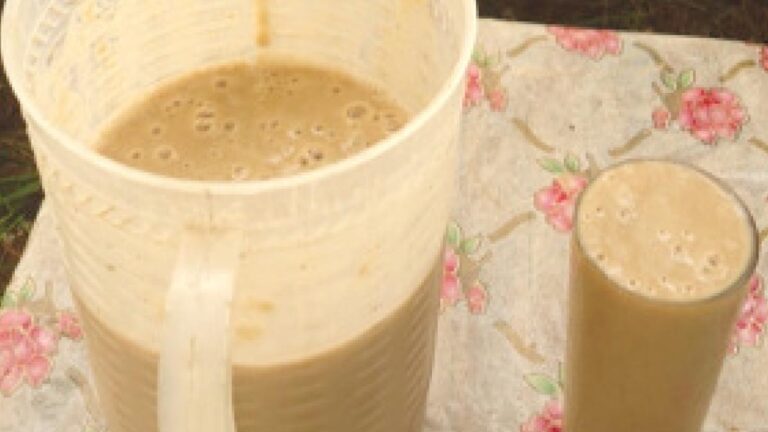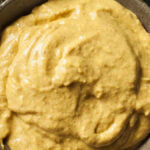Shamita is a traditional fermented beverage widely consumed in different regions of Ethiopia, especially by the Gurage people. It is low in alcohol content, and is made by overnight fermentation of mainly roasted barley flour.
Because of its thick consistency and being a good source of proteins, Shamita has been known to be used as a meal replacement. However, it has poor keeping quality and must be consumed within a few hours after being ready for consumption.
Ingredients Required to Make Shamita
- 1 kilogram of barely flour
- 450 grams of barely malt
- 1850 grams of Besso Duket (roasted barley flour)
- 7 grams of coriander powder
- 5 grams of Dinbilal (coriander seed)
- 1.5 grams of Netch Azmud (Ethiopian Wild Caraway Seeds)
- 8.5 liters of water
How to Make Shamita (Step-by-Step Tutorial)
- Start by making a dough by mixing 2 liters of water with barely flour. Bake the dough into bread and shred the bread into smaller pieces.
- Prepare a clean container and mix the pieces of bread with the barely malt. Add 3 more liters of water and mix them all together thoroughly. Then cover the container and let the mixture sit for 3 days, by which time it should ferment.
- On the third day, pour 7 more liters of water. Then stain the mixture using a sieve into another clean container. Cover the container and let it sit for about 2 hours.
- In the mean time, use a large bowl to add the Besso into the first mixture. Then pour in 2 liters of water and mix thoroughly.
- Next, add this mixture into the main mixture and add the spices along with 3 more liters of water. Mix them all together thoroughly and cover.
- Finally, filter the mixture into a new container. You now have your Shamita ready to serve and enjoy.
Equipment Recommendations to Make Shamita
Affiliate Disclaimer: As an affiliate, we get commissions for purchases made through links on this website from Amazon and other third parties.















